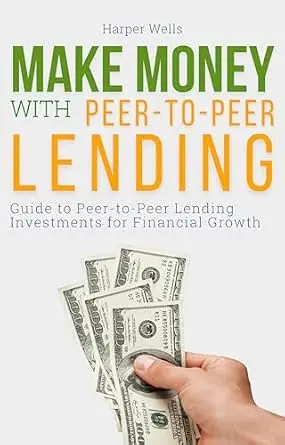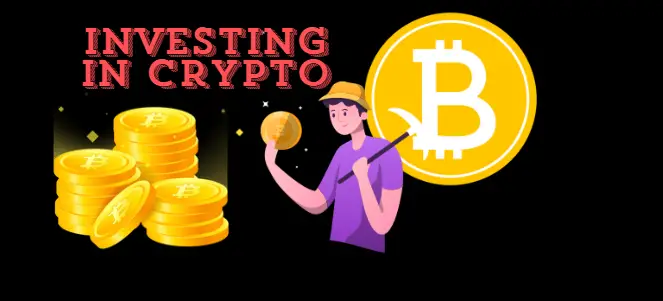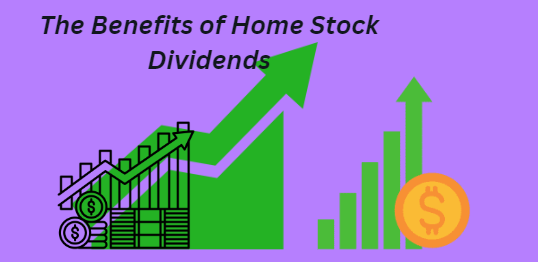
Peer-to-Peer Lending: How to Make Money
Peer-to-peer, or P2P, lending is a well-liked alternative investing approach that enables people to lend money to borrowers directly via Internet platforms. This approach makes chances for lenders and borrowers alike by eschewing traditional financial institutions. We will look at the mechanics, capital requirements, and potential hazards of peer-to-peer lending in this post, along with how you may make Passive income with it.
Can You Make Good Money with Peer-to-Peer Lending?
Peer-to-peer lending does have the potential to provide substantial profits, but how much depends on some variables, such as the platform you use, the risk level of your investments, and your overall approach to investing. Interest rates on P2P lending sites are usually greater than those on bonds or traditional savings accounts. Returns may vary from 5% to 12% or higher each year, contingent on the borrower’s creditworthiness and other market factors.
It’s crucial to realize, nevertheless, that greater gains include greater dangers. Depending on borrower characteristics and the state of the economy, default rates might differ dramatically. Thus, even if there is a chance to make a lot of money, it’s important to approach P2P lending with knowledge.
How Does P2P Lending Make Money?
P2P lending makes money primarily through interest payments made by borrowers. When a borrower takes out a loan from a P2P platform, they pay interest on that loan over time. The system distributes this interest among the lenders based on their respective contributions to the loan.

Additionally, many P2P platforms charge fees for their services. These fees can include origination fees paid by borrowers when they take out loans and servicing fees deducted from lender earnings. Understanding these fee structures is vital as they can impact your overall returns.
How Much Money Do You Need for Peer-to-Peer Lending Business?
The amount of money needed to start investing in peer-to-peer lending varies by platform but generally starts at around $25 to $1,000 per loan. Many platforms allow you to diversify your investments across multiple loans with smaller amounts. For instance, if you have $1,000 to invest and choose loans that require a minimum of $25 each, you could spread your investment across 40 different loans.
While there’s no strict minimum investment requirement across all platforms, having a larger capital base allows for better diversification and risk management.
How to Make Passive Income from Peer-to-Peer Lending?
The following actions can be taken to generate passive income through peer-to-peer lending:
- Pick a Reputable Platform: Go for a reputable P2P lending platform that has been around for a while and is renowned for its dependability and user-friendly design.
- Diversify Your Investments: To reduce possible losses, distribute your funds over several loans with varying risk profiles.
- Reinvest Earnings: Rather than cashing out right away, use any interest payments that you get from borrowers to finance further loans.
- Keep an Eye on Your Portfolio: Review your investments regularly and modify your approach in light of the platform’s performance indicators.
You may gradually build up a passive income stream by paying regular interest by paying attention to these stages.
How to Start Peer-to-Peer Lending Investment?
Peer-to-peer lending requires a few simple steps to get started:
- Research Platforms: Look into and contrast the characteristics of several P2P lending platforms, such as LendingClub and Prosper.
- Create an Account: Fill out the required personal information and identification verification to register on the platform of your choice.
- Fund Your Account: Transfer money to your account using a bank transfer or another authorized payment option.
- Choose Loans: Look through the available loan listings according to factors like predicted return rates and risk tolerance; pick the loans that fit your investment objectives.
- Track Performance: Utilize the platform’s performance data to monitor repayments and make necessary portfolio adjustments.
You may successfully dabble in peer-to-peer lending investments by paying close attention to these procedures.
Which P2P is Best to Invest in?
The best P2P lending platform varies based on individual preferences, but some popular options include:
- LendingClub: Known for its extensive borrower pool and robust analytics tools.
- Prosper: Offers competitive returns along with an easy-to-use interface.
- Upstart: Focuses on younger borrowers using AI-driven credit assessments which may yield unique opportunities.
When choosing a platform, consider factors such as historical performance data, fee structures, user experience, customer service quality, and available loan types.
What Happens If You Don’t Pay Back a Peer-to-Peer Loan?
Several repercussions might occur if you fail to repay a peer-to-peer loan.
- The loan provider could notify credit agencies about delinquent payments, which might lower your credit rating.
- Depending on the regulations of the state, the lender may start collection attempts through outside agencies or take legal action.
- A few platforms provide debt collection options, which may include offering to sell past-due loans at a reduced price.
Before signing any loan arrangement, borrowers must make sure they are aware of their commitments.
Do You Have To Pay Back Peer-To-Peer Lending?
Indeed, just as with any other conventional bank loan or credit obligation, borrowers of peer-to-peer loans are legally required to repay the loans by the conditions specified in their loan agreements.
In addition to financial penalties, nonpayment can have a long-term negative impact on one’s credit history, which can limit one’s ability to borrow money in the future.
What Are The Problems With Peer-To-Peer Lending?
While peer-to-peer financing (P2P) has many advantages, including high returns and accessibility for lenders and borrowers alike, it also has several drawbacks.
fail Risk: If borrowers fail on their loans, lenders may lose all or a portion of the money they invested.
- Economic Sensitivity: Economic downturns have the potential to dramatically impact total returns by raising default rates.
- Regulatory Risks: Because this sector is developing quickly, modifications to rules may affect the profitability or operations of platforms and investors alike.
- Limited Liquidity: P2P loans can be tough to sell before they mature because of platform restrictions, unlike equities or bonds, which you can trade quickly in the market.
Understanding these issues is crucial before diving into peer-to-peer lending investments to make
informed decisions.
In Our guide “Peer-to-Peer Lending: How to Make Money” presents a compelling opportunity for generating passive income with potentially superior returns compared to traditional savings methods. However, it is crucial to meticulously assess the associated risks and conduct comprehensive research on platforms that align with your specific investment objectives.







